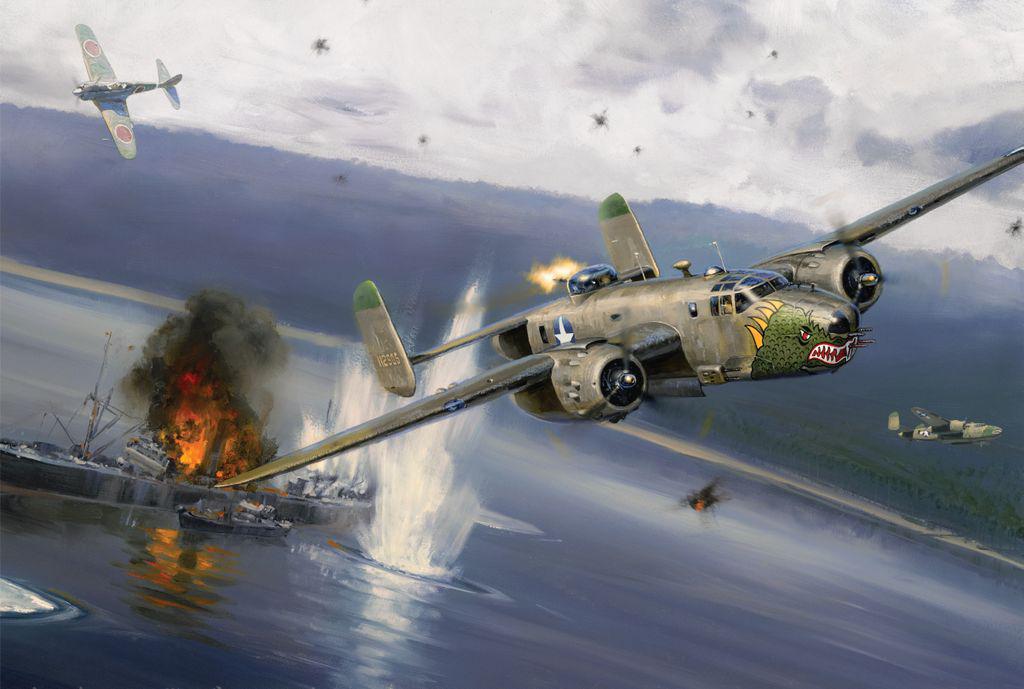THE MIGHTY MITCHELL


THE NORTH AMERICAN B-25 MITCHELL WAS PRESENT FOR THE OVERTURE OF THE PACIFIC WAR AND WAS STILL ONSTAGE AS THE CURTAIN FELL ON THE FINAL ACT.
On April 18, 1942, 16 B-25Bs flew one of the first American offensive missions of the war—the famous “Thirty Seconds Over Tokyo” Doolittle Raid. On August 19, 1945, four B-25J gunships escorted a surrender-negotiation delegation aboard two Mitsubishi Betty bombers from Japan partway to Manila and back.
Among American aircraft, only the Boeing B-17 had a longer combat career. The Fortress began flying raids for the Royal Air Force in July 1941, and a dozen unarmed B-17s were in the air during the Pearl Harbor attack five months later.
The B-25 finished World War II virtually unchanged from the form in which it had been born. From the A model to the J, the airframe remained unstretched, the flying and control surfaces were constant and the engines were unchanged other than detail mods—different exhaust systems, carburetors and the like. The single biggest difference as the Mitchell aged and improved was its ordnance—guns that grew and proliferated in a manner that totally changed the airplane’s mission. By the end of the war, the B-25 was the most heavily armed aircraft in the U.S. Army Air Forces’ inventory. A single 12-air-plane squadron of B-25s carried more .50-caliber machine guns than four infantry regiments.
The B-25 was intended to be a medium bomber, delivering substantial bombloads more economically, more rapidly and more accurately, from moderate altitudes, than the high-altitude heavy-weight B-17s and B-24s. But it found its true calling as a low-level attack bomber and strafer.
Economy had a lot to do
You’re reading a preview, subscribe to read more.
Start your free 30 days



